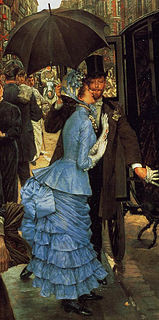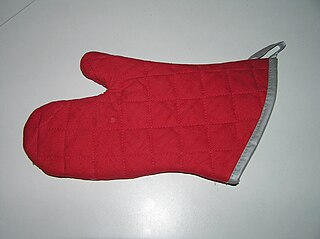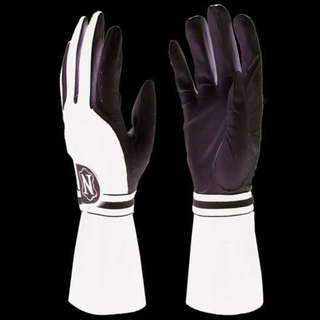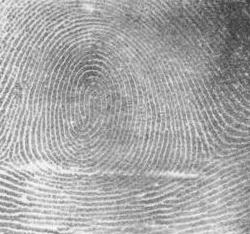
A glove is a garment covering the whole hand. Gloves usually have separate sheaths or openings for each finger and the thumb.

Vestments are liturgical garments and articles associated primarily with the Christian religion, especially among the Eastern Orthodox, Catholics, Anglicans, and Lutherans. Many other groups also make use of liturgical garments; this was a point of controversy in the Protestant Reformation and sometimes since, in particular during the Ritualist controversies in England in the 19th century.

A baseball glove or mitt is a large leather glove worn by baseball players of the defending team, which assists players in catching and fielding balls hit by a batter or thrown by a teammate.

Cricket clothing and equipment is regulated by the laws of cricket. Cricket clothing, known as cricket whites, or flannels, is slightly loose fitting so as not to restrict players' movements. Use of protective equipment, such as helmets, gloves and pads, is also regulated.

A fashion accessory is an item used to contribute, in a secondary manner, to the wearer's outfit, often used to complete an outfit and chosen to specifically complement the wearer's look. It has the capacity to further express an individuals identity and personality as there are accessories that come in different, shapes, sizes, hues etc. The term came into use in the 20th century.

There are three styles of gloves worn by ice hockey players. Skaters wear similar gloves on each hand, while goaltenders wear gloves of different types on each hand.

A gauntlet is a variety of glove, particularly one having been constructed of hardened leather or metal plates which protected the hand and wrist of a combatant in Europe between the early fourteenth century and the Early Modern period. Today it can also refer to an extended cuff covering the forearm as part of a woman's garment.

A rubber glove is a glove made out of rubber. Rubber gloves can be unsupported or supported. Its primary purpose is protection of the hands while performing tasks involving chemicals. Rubber gloves can be worn during dishwashing to protect the hands from detergent and allow the use of hotter water. Sometimes caregivers will use rubber gloves during the diaper changing process to prevent contact with the child's fecal material/urine. Health professionals use medical gloves rather than rubber gloves when performing surgical operations.

Ladies' evening gloves or opera gloves are a type of formal glove that reaches beyond the elbow.

A shadbelly is a type of riding coat worn in certain equestrian situations by fox hunting members, dressage riders, eventers, and occasionally by other hunt seat riders. Shadbellies are also standard attire for the show hack classes at certain breed shows in the United States and Canada.

Fashion in the 1880s in Western and Western-influenced countries is characterized by the return of the bustle. The long, lean line of the late 1870s was replaced by a full, curvy silhouette with gradually widening shoulders. Fashionable waists were low and tiny below a full, low bust supported by a corset. The Rational Dress Society was founded in 1881 in reaction to the extremes of fashionable corsetry.

An oven glove, or oven mitt, is an insulated glove or mitten usually worn in the kitchen to easily protect the wearer's hand from hot objects such as ovens, stoves, cookware, etc. They are similar to pot-holders.

The Episcopal gloves or Pontifical gloves are a Roman Catholic pontifical vestment worn a by bishop when celebrating Solemn Pontifical Mass. They are worn from the beginning of the Mass until the offertory, when they are removed. They can be elaborately embroidered and generally match the liturgical color of the Mass. They are not worn for Good Friday or Requiem Masses. While normally reserved for bishops, other prelates entitled to use pontificals, including abbots, may also use them without a special papal privilege.

Lacrosse gloves are heavily padded, protective gloves worn by men's lacrosse players. The gloves are designed to protect players' hands, wrists, and forearms from checks, or legal defensive hitting common in the sport. Gloves consist of thick padding on the back of the hand and forearm covered in leather or canvas material, and a palm area made of synthetic and mesh material. A goaltender's gloves may have extra padding for the thumb to protect against injury from shots. While NCAA collegiate rules require that men's gloves have palms covered, other leagues, including post-collegiate club lacrosse, the National Lacrosse League, Major League Lacrosse, and international play, permit players to cut out the palm area for greater grip and control of the lacrosse stick.

In several sports with goalkeepers or goaltenders protecting nets or goals, a save is credited to a goaltender that stops the playing object from entering the goal. These sports include football, ice hockey, and lacrosse, among others.

The goalie blocker is a rectangular piece of equipment worn by ice and roller hockey goaltenders. It is generally worn on the dominant hand.

Batting gloves are a component in Bat-and-ball games sportswear. Typically consisting of a leather palm and back made of nylon or another synthetic fabric, the glove covers one or both hands of a batter, providing comfort, prevention of blisters, warmth, improved grip, and shock absorption when hitting the ball. The use of gloves is not obligatory in any level of the game, but they are considered an essential part of Cricket clothing and equipment.

Glove prints, also sometimes described as gloveprints or glove marks, are latent, fingerprint-like impressions that are transferred to a surface or object by an individual who is wearing gloves.

Portrait of Catharina Brugmans is a painting by the Dutch Golden Age painter Frans Hals, painted in 1634 and now in a private collection. It is considered a pendant to the portrait of Catharina's husband Tieleman Roosterman.




















